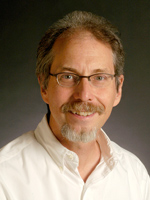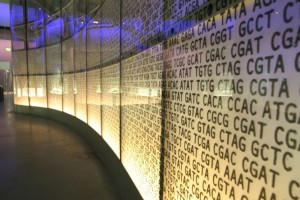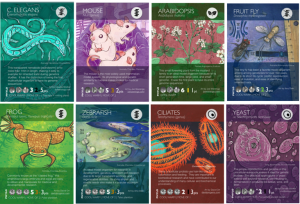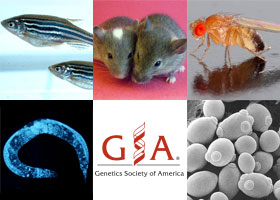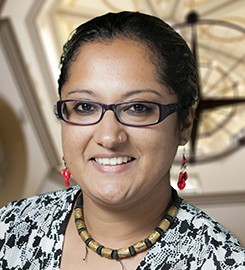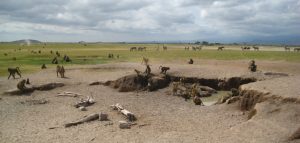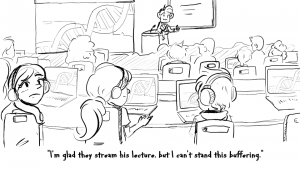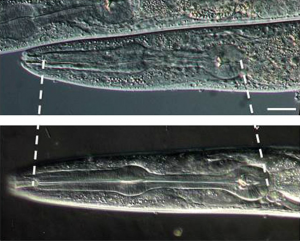Enter your address to receive notifications about new posts to your email.
-
How bacteria dodge new antibiotic candidates
Antibiotics, a vital tool for fighting infections, were originally products of nature—the first antibiotic was serendipitously discovered in mold contaminating a bacterial culture. As antibiotic resistance becomes an increasingly serious threat, scientists are attempting to wring another type of pathogen-fighting drug from the wild: antimicrobial peptides. Antimicrobial peptides, or AMPs, are found in almost every…
-
Behind the podium: TAGC Keynote Speaker Jef Boeke
“This is the first self-replicating species that we’ve had on the planet whose parent is a computer. Because it’s very difficult to eliminate multiple genes from a cell . . . we decided early on that we had to take a synthetic route—even though nobody had been there before—to see if we could synthesize the…
-
Model Organism Databases join forces: Announcing the Alliance of Genome Resources
Model Organism Databases (MODs) and the Gene Ontology Consortium play a crucial “behind-the-scenes” role in the work of model organism geneticists and many other biomedical researchers. This guest post by the newly-formed Alliance of Genome Resources announces the group’s intention to integrate the efforts of the MODs and other genome resources. You can learn more…
-
Playing a game with basic research
Phil Hieter, former GSA President and a Co-Chair for The Allied Genetics Conference, works at the University of British Columbia (UBC) in Vancouver, Canada, where Dave Ng directs the Michael Smith Laboratories Teaching Facility, AMBL. Dave developed a popular card game, Phylo, as a method to teach people about biodiversity, and Phil had an idea—what…
-
Action Alert: Support model organism database funding
Update: This letter of support received 11,078 signatures and has been presented to Dr. Francis Collins. Thank you for your interest. Continue to follow GenestoGenomes.org for updates on this issue. Leaders of several model organism communities, working with the Genetics Society of America (GSA), have come together to write a Statement of Support for the…
-
New Faculty Profile: Divya Sitaraman
New Faculty Profiles showcase GSA members who are establishing their first independent labs. If you’d like to be considered for a profile, please complete this form on the GSA website. Divya Sitaraman Assistant Professor (since 2014) Department of Psychological Sciences University of San Diego Lab website Research program: My long-term goal is to understand behavioral outputs…
-
Fecal alchemy: Turning poop into genomics gold
When it comes to genotyping technology, poop genetics is stuck in the 1990s. While most geneticists are now awash in genome-scale data from thousands of individuals, those who depend on fecal and other non-invasively collected samples still rely on old-school, boutique panels of a dozen or so genetic markers. But feces — along with fur,…
-
Behind the podium: TAGC Keynote Speaker Cori Bargmann
Dr. Cori Bargmann studies how an animal’s genes, environment and experience cooperate to influence different behaviors. Bargmann, Torsten N. Wiesel Professor and the head of the Lulu and Anthony Wang Laboratory of Neural Circuits and Behavior at The Rockefeller University, served as co-chair of the NIH Advisory Committee for the Brain Research through Advancing Innovative…
-
Fish with robot friends: linking genes to behavior
The relative contributions of nature and nurture to behavior are a perennial source of dispute. That there is a genetic component is clear, but frustratingly, only a handful of specific genes are known to directly influence behavior in vertebrates. In the June issue of GENETICS, Greenwood et al. describe how they pinned down one of…
-
Let’s connect
In my thirty plus years as a faculty member I’ve had a lot of people in tears sitting in my office. Too many to tally, really. They were women and men, grad students and postdocs, from the U.S. and abroad, from my lab and other labs. How do we – charged with responsibility for the…
-
Stretchy cells underlie organ development
Animals’ complex body plans come at a cost: their development is elaborate and must be delicately controlled. One critical aspect of development is size and shape control—every organ needs to fit in its place. The process requires the orchestration of a dizzying number of pathways, and understanding even a single component is far from trivial.…

![Molecular model of penicillin, the first antibiotic discovered. Later, antimicrobial peptides were also found to have antibiotic properties. By Science Museum London / Science and Society Picture Library [CC BY-SA 2.0 (http://creativecommons.org/licenses/by-sa/2.0)], via Wikimedia Commons.](https://s36063.pcdn.co/wp-content/uploads/2016/06/Molecular_model_of_Penicillin_by_Dorothy_Hodgkin_9663803982-300x212.jpg)
